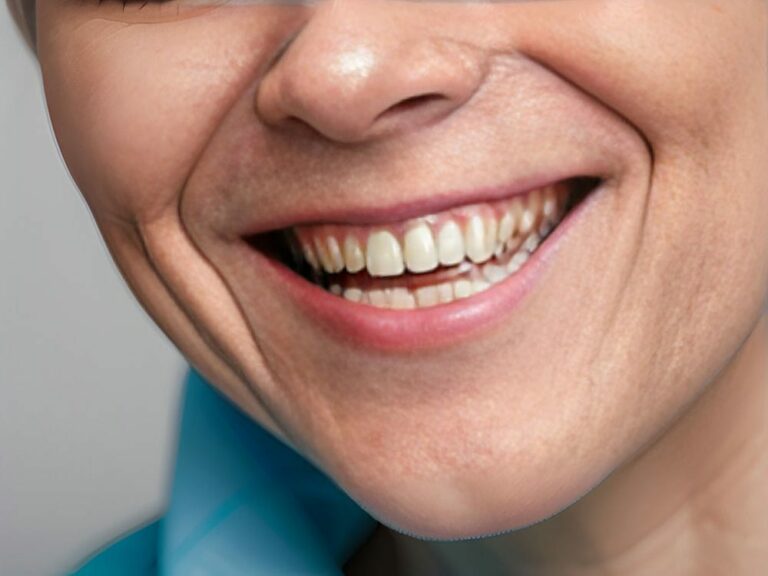The Evolution of Dental Technology: How Material Science Drives Advancements in Dental Procedures
The field of dentistry has come a long way in recent years, thanks to the advancements in material science. With the development of new materials and technologies, dental procedures have become more efficient, effective, and aesthetically pleasing than ever before. From fillings to implants, material science plays a crucial role in driving these advancements.
One major area where material science has greatly impacted dental procedures is in the development of ceramics. Ceramic materials offer several advantages over traditional metal materials. They are biocompatible, meaning they are well-tolerated by the human body and do not cause any adverse reactions. Additionally, ceramics can be customized to match the natural color and translucency of teeth, making them ideal for restorations such as crowns and veneers. These advancements in ceramic technology have revolutionized the field of cosmetic dentistry, allowing patients to achieve beautiful smiles that look and feel natural.
Polymer science is another area that has made significant contributions to dental procedures. Polymers are versatile materials that can be molded into various shapes and forms. In dentistry, polymers are used for a wide range of applications such as dentures, orthodontic appliances, and even dental implants. The use of polymers in these procedures offers several benefits including improved comfort for patients and increased durability of dental appliances. Furthermore, polymer-based materials are lightweight and flexible, making them ideal for creating precise and comfortable dental devices.
Biomaterials have also played a critical role in advancing dental procedures. Biomaterials are synthetic or natural substances that interact with biological systems to improve patient outcomes. In dentistry, biomaterials are used for various purposes such as bone grafting, tissue regeneration, and drug delivery systems. These materials promote healing and tissue integration while minimizing any adverse effects on the body. Through ongoing research and development in biomaterials science, dentists can provide better treatment options for their patients.
In summary,Ceramics, polymer science, and biomaterials are just a few examples of how material science is driving advancements in dental procedures. These innovative materials offer improved aesthetics, durability, and comfort for patients. As material science continues to evolve, the future of dentistry looks promising with even more advancements on the horizon.
Cutting-Edge Research and Innovation in Dental Materials: A Look into the Future of Dentistry
The field of dentistry is constantly evolving, driven by cutting-edge research and innovation in dental materials. One area of focus for future advancements is nanotechnology. Nanotechnology involves the manipulation of matter on an atomic and molecular scale, allowing for the creation of materials with unique properties. In dentistry, nanotechnology holds great potential for improving the performance and longevity of dental restorations. For example, researchers are exploring the use of nanomaterials to develop stronger and more durable fillings, crowns, and implants that can withstand the daily wear and tear of the mouth.
Another exciting area of research is in prosthodontics, which focuses on replacing missing teeth or restoring damaged teeth. With advancements in material science, prosthodontic procedures have become more advanced and sophisticated. For instance, researchers are working on developing new materials that mimic the natural structure and function of teeth, allowing for better integration with surrounding tissues. This could lead to more comfortable and functional dental prosthetics that closely resemble natural teeth.
Tooth regeneration is another area that holds promise for the future of dentistry. Currently, tooth loss often requires invasive procedures such as dental implants or bridges. However, scientists are actively researching ways to regenerate teeth using stem cells or bioactive materials. By harnessing the body’s natural regenerative abilities, it may be possible to regrow damaged or lost teeth without relying on artificial replacements.
As research continues to push boundaries in dental material science, we can expect even more exciting advancements in the field of dentistry. Nanotechnology has the potential to revolutionize dental restorations, while prosthodontics research aims to create more realistic and functional dental prosthetics. Tooth regeneration could potentially eliminate the need for invasive procedures altogether. With ongoing innovation in these areas and others, patients can look forward to a future where dental procedures are even more effective, efficient, and patient-centered.
Biocompatible Materials: Revolutionizing Dental Implants and Restorative Procedures
Digital dentistry and 3D printing have revolutionized the field of dental implants and restorative procedures. These advancements in technology have allowed for more precise and customized implant placement, resulting in improved outcomes for patients. Through the use of digital imaging and computer-aided design (CAD), dentists are able to create virtual models of a patient’s mouth, allowing for accurate planning and placement of dental implants. This digital approach ensures that the implant is positioned correctly, leading to better stability and long-term success.
Additionally, 3D printing has become an invaluable tool in creating custom prosthetics and dental restorations. By using specialized software and materials, dentists can now print highly accurate dental models, crowns, bridges, and even dentures. This not only improves the fit and aesthetics of these restorations but also reduces the time and cost associated with traditional laboratory techniques.
Another important aspect of dental implant procedures is bone grafting. Bone grafts are often necessary to provide a solid foundation for the implant to integrate into the jawbone. With advancements in material science, there are now biocompatible materials available that promote bone growth and regeneration. These materials can be used as alternatives to traditional bone grafts, reducing the need for additional surgical procedures and improving overall patient comfort.
With digital dentistry, 3D printing, and innovative biocompatible materials, dental implant procedures have become more efficient, precise, and patient-friendly. The ability to digitally plan implant placement ensures optimal results, while 3D printing allows for customized restorations that closely match a patient’s natural teeth. Furthermore, the development of biocompatible materials has simplified bone grafting procedures, making them less invasive and more comfortable for patients. As technology continues to advance in these areas, we can expect further improvements in dental implant procedures and restorative treatments.
Uncovering the Latest Developments in Material Science for Enhanced Dental Treatments
In the field of implantology, material science has played a crucial role in advancing dental treatments. Through the development of new biocompatible materials, dentists are able to provide improved solutions for patients requiring dental implants. These materials not only promote bone growth and integration but also enhance the stability and longevity of the implants.
Endodontics, which focuses on treating diseases and injuries to the dental pulp, has also benefited from advancements in material science. The introduction of biocompatible root canal filling materials has revolutionized endodontic procedures by providing better sealability and reducing the risk of reinfection. These materials ensure that the root canal is effectively sealed off from bacteria, leading to successful treatment outcomes.
Oral surgery, another specialized area within dentistry, has seen significant progress in recent years through the use of advanced biomaterials. Surgical sutures made from biocompatible materials have improved wound healing and reduced post-operative complications. Additionally, bone grafting procedures have been enhanced with the development of synthetic bone substitutes that can be easily shaped and integrated into the jawbone.
The continuous developments in material science are driving advancements in implantology, endodontics, and oral surgery. By utilizing biocompatible materials specifically designed for these dental procedures, dentists can achieve more predictable results with reduced risks for patients. As research continues to push boundaries in this field, we can expect further innovations that will enhance dental treatments and improve patient outcomes.
Exploring the Role of Material Science in Improving Longevity and Durability of Dental Restorations
Material science has also made significant advancements in the field of orthodontics, which focuses on correcting misaligned teeth and jaws. Traditional orthodontic treatments often involve the use of metal braces, which can be uncomfortable and aesthetically unappealing for patients. However, with the development of new materials such as ceramic brackets and clear aligners, orthodontic treatment has become more discreet and comfortable.
Ceramic brackets are made from tooth-colored materials that blend in with the natural color of the teeth, making them less noticeable compared to traditional metal brackets. Clear aligners are custom-made trays that gradually move the teeth into their desired positions. These aligners are made from a transparent material, allowing patients to undergo orthodontic treatment without drawing attention to their dental appliances.
In the field of periodontics, which focuses on treating diseases and conditions affecting the gums and supporting structures of the teeth, material science has provided innovative solutions for gum grafting procedures. Gum grafting is a surgical procedure that involves taking tissue from one area of the mouth and transplanting it to another area that requires additional gum tissue. With the development of biocompatible materials such as collagen membranes, dentists now have an alternative to harvesting tissue from another part of the patient’s mouth. These membranes promote healing and reduce post-operative discomfort.
Tooth bonding is a common cosmetic dental procedure used to repair chipped or cracked teeth, close gaps between teeth, or change the shape or color of a tooth. Material science has played a crucial role in improving tooth bonding techniques by developing composite resin materials that closely mimic the natural appearance of teeth. These materials can be bonded directly to the tooth surface and shaped to achieve optimal aesthetics and functionality.
Advancements in material science have revolutionized orthodontics, periodontics, and tooth bonding procedures by providing more effective and patient-friendly treatment options. By utilizing new materials that are biocompatible, durable, and esthetically pleasing, dentists can offer enhanced dental procedures that improve the longevity and durability of dental restorations. These advancements not only benefit patients by providing more comfortable and aesthetically pleasing treatments but also contribute to the overall success and satisfaction of dental professionals in their practice.
From Lab to Practice: How Research in Material Science Transforms Dental Procedures
Tooth whitening is a popular cosmetic dental procedure that aims to brighten and lighten the color of teeth. Material science has played a crucial role in improving tooth whitening techniques by developing advanced whitening agents and delivery systems. These advancements have led to more effective and efficient tooth whitening procedures, allowing patients to achieve their desired results with minimal time and discomfort.
Antimicrobial materials have also made significant contributions to the field of dentistry. Dental infections and decay are commonly caused by bacteria that colonize on the surfaces of teeth and restorations. By incorporating antimicrobial materials into dental products such as toothbrushes, mouth rinses, and dental implants, researchers have been able to reduce the risk of bacterial colonization and improve oral health outcomes.
Dental adhesives are essential components in restorative dentistry, as they are used to bond dental restorations such as crowns, veneers, and fillings to natural tooth structure. Material science has led to the development of new adhesive systems that provide improved bonding strength, durability, and esthetics. These advancements have revolutionized restorative dentistry by allowing for more reliable and long-lasting dental restorations.
Through ongoing research in material science, dental professionals can continue to explore innovative ways to enhance various dental procedures. Whether it is improving tooth whitening techniques, developing antimicrobial materials, or advancing dental adhesives, material science plays a vital role in transforming dental practice. By staying informed about the latest advancements in material science, dentists can provide their patients with state-of-the-art treatments that deliver optimal results for oral health and aesthetics.
Advancements in Material Science: Enhancing Precision and Aesthetics in Dental Restorations
Dental composites have been a game-changer in restorative dentistry. These materials, made up of a mixture of resin and filler particles, are used to restore teeth that have been damaged due to decay or trauma. The development of dental composites has allowed for more conservative and aesthetic dental restorations compared to traditional metal amalgam fillings.
One of the key advantages of dental composites is their ability to closely mimic the appearance of natural tooth enamel. With advancements in material science, dental composites can now be matched to the exact shade and translucency of the patient’s surrounding teeth, resulting in seamless and natural-looking restorations. This is especially important for visible areas such as the front teeth, where aesthetics play a significant role.
In addition to their aesthetic benefits, dental composites also offer excellent bonding strength to tooth structure. This means that less healthy tooth enamel needs to be removed during the preparation process, preserving more of the natural tooth structure. Furthermore, dental composites are also more versatile in terms of application techniques, allowing dentists to achieve precise shaping and contouring for optimal function and comfort.
By harnessing the power of material science, dental professionals can provide their patients with durable and aesthetically pleasing restorations that blend seamlessly with their natural teeth. The advancements in dental composites have revolutionized restorative dentistry by offering improved aesthetics, conservation of healthy tooth structure, and enhanced functionality. As technology continues to advance in material science, we can expect even greater breakthroughs in the field of dentistry for the benefit of both patients and practitioners alike.
New Frontiers in Material Science for Minimally Invasive Dental Treatments
Advancements in material science have opened up new frontiers in dental treatments, particularly in the area of minimally invasive procedures. These cutting-edge techniques focus on preserving as much natural tooth structure as possible while still achieving optimal results. By utilizing innovative materials, dentists can now perform a variety of procedures with minimal discomfort and reduced recovery time.
One such advancement is the use of bioactive materials in dental treatments. These materials have the ability to interact with the body’s natural tissues, promoting healing and regeneration. For example, bioactive composites can release ions that help remineralize and strengthen weakened tooth enamel. This not only restores the tooth’s structural integrity but also improves its resistance to future decay.
Another breakthrough in material science is the development of adhesive technologies that allow for stronger and more durable bonding between restorative materials and tooth structures. This enables dentists to create long-lasting restorations without compromising healthy tooth enamel. Additionally, these advanced adhesives provide a seal that prevents bacteria from infiltrating gaps between restorations and teeth, reducing the risk of secondary decay.
With ongoing advancements in material science, the future of minimally invasive dental treatments looks promising. Researchers are constantly exploring new materials and techniques to further improve patient outcomes. By combining the principles of biomaterials with precision technology, dental professionals can continue to provide their patients with minimally invasive options that prioritize aesthetics, functionality, and long-term oral health.
As technology continues to advance in material science, we can expect even more exciting developments in minimally invasive dental treatments. The integration of innovative materials and techniques will revolutionize how dentistry is practiced, focusing on preserving natural tooth structure while achieving optimal results for patients. With each new discovery, dentists will be equipped with better tools to deliver effective and conservative treatments that enhance both oral health and overall well-being.
Harnessing the Power of Nanotechnology: Breakthroughs in Material Science for Dentistry
The field of material science has brought about significant advancements in dental procedures, particularly in the realm of minimally invasive treatments. These cutting-edge techniques focus on preserving as much natural tooth structure as possible while still achieving optimal results. By utilizing innovative materials, dentists are now able to perform a range of procedures with minimal discomfort and reduced recovery time.
One notable advancement is the use of bioactive materials in dental treatments. These materials have the ability to interact with the body’s natural tissues, promoting healing and regeneration. For instance, bioactive composites can release ions that aid in remineralizing and strengthening weakened tooth enamel. This not only restores the structural integrity of the tooth but also improves its resistance to future decay.
Another breakthrough in material science is the development of adhesive technologies that enable stronger and more durable bonding between restorative materials and tooth structures. This allows dentists to create long-lasting restorations without compromising healthy tooth enamel. Additionally, these advanced adhesives provide a seal that prevents bacteria from infiltrating gaps between restorations and teeth, reducing the risk of secondary decay.
As material science continues to advance, the future of minimally invasive dental treatments looks promising. Researchers are constantly exploring new materials and techniques to further enhance patient outcomes. By combining biomaterial principles with precision technology, dental professionals can continue offering minimally invasive options that prioritize aesthetics, functionality, and long-term oral health.
With ongoing advancements in material science technology, we can expect even more exciting developments in minimally invasive dental treatments. The integration of innovative materials and techniques will revolutionize how dentistry is practiced, focusing on preserving natural tooth structure while achieving optimal results for patients. With each new discovery, dentists will be equipped with better tools to deliver effective and conservative treatments that enhance both oral health and overall well-being.
Shaping the Future of Dentistry through Innovations in Biocompatible Materials
The field of material science has revolutionized dental procedures, particularly in the realm of minimally invasive treatments. These cutting-edge techniques focus on preserving natural tooth structure while achieving optimal results. By utilizing innovative materials, dentists can now perform a range of procedures with minimal discomfort and reduced recovery time.
One significant advancement is the use of bioactive materials in dental treatments. These materials have the ability to interact with the body’s natural tissues, promoting healing and regeneration. For example, bioactive composites can release ions that aid in remineralizing and strengthening weakened tooth enamel. This not only restores the structural integrity of the tooth but also improves its resistance to future decay.
Another breakthrough in material science is the development of adhesive technologies that enable stronger and more durable bonding between restorative materials and tooth structures. This allows dentists to create long-lasting restorations without compromising healthy tooth enamel. Additionally, these advanced adhesives provide a seal that prevents bacteria from infiltrating gaps between restorations and teeth, reducing the risk of secondary decay.
As material science continues to advance, the future of minimally invasive dental treatments looks promising. Researchers are constantly exploring new materials and techniques to further enhance patient outcomes. By combining biomaterial principles with precision technology, dental professionals can continue offering minimally invasive options that prioritize aesthetics, functionality, and long-term oral health.
With ongoing advancements in material science technology, we can expect even more exciting developments in minimally invasive dental treatments. The integration of innovative materials and techniques will revolutionize how dentistry is practiced, focusing on preserving natural tooth structure while achieving optimal results for patients. With each new discovery, dentists will be equipped with better tools to deliver effective and conservative treatments that enhance both oral health and overall well-being.
FAQs
Q: What advancements in dental procedures have been made through material science?,
A: Material science has led to advancements in dental procedures such as the development of stronger and more durable dental materials, improved dental implants, and the creation of more natural-looking dental restorations.,
Q: How has material science improved dental materials?,
A: Material science has allowed for the development of stronger and more durable dental materials, such as ceramic and composite resins, which offer better longevity and performance compared to traditional materials like amalgam.,
Q: What are the benefits of improved dental materials?,
A: Improved dental materials provide several benefits, including increased strength and durability, enhanced aesthetics, and the ability to conserve more natural tooth structure during dental procedures.,
Q: What are dental implants, and how have they been improved through material science?,
A: Dental implants are artificial tooth roots used to support dental restorations. Material science has led to the development of biocompatible materials like titanium, which have improved the success rate and longevity of dental implants.,
Q: How have dental restorations become more natural-looking through material science advancements?,
A: Material science has allowed for the development of dental restorations, such as tooth-colored ceramic crowns and veneers, that closely resemble the natural appearance of teeth. This improves aesthetics and patient satisfaction.,
Q: Are there any advancements in pain management during dental procedures related to material science?,
A: While material science itself may not directly relate to pain management during dental procedures, advancements in dental materials have led to the development of more comfortable and efficient dental tools and instruments, reducing patient discomfort.,
Q: Can material science help in the prevention of dental cavities?,
A: Material science plays a role in the prevention of dental cavities through the development of materials with antimicrobial properties, such as dental composites and dental sealants, which help inhibit the growth of bacteria that cause cavities.,
Q: How has material science contributed to the field of orthodontics?,
A: Material science has contributed to orthodontics by providing new materials for orthodontic appliances, such as clear aligners made from thermoplastic materials, which offer a more aesthetically pleasing alternative to traditional metal braces.,
Q: Are there any advancements in dental procedures related to material science that have improved patient comfort?,
A: Yes, material science advancements have led to the development of more comfortable and flexible dental materials, such as flexible denture base materials, which provide a better fit, improved stability, and enhanced comfort for patients.,
Q: How has material science improved the longevity of dental procedures?,
A: Material science has improved the longevity of dental procedures by developing more durable materials, such as zirconia and composite resins, that can withstand the forces of biting and chewing, resulting in longer-lasting dental restorations.



















